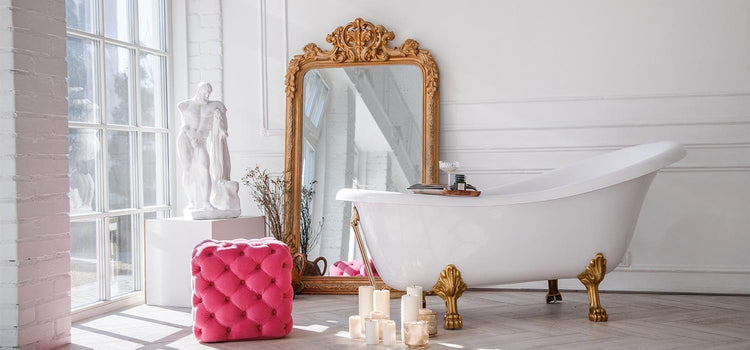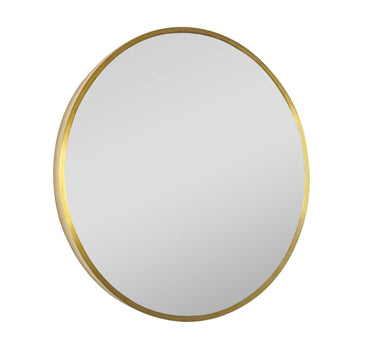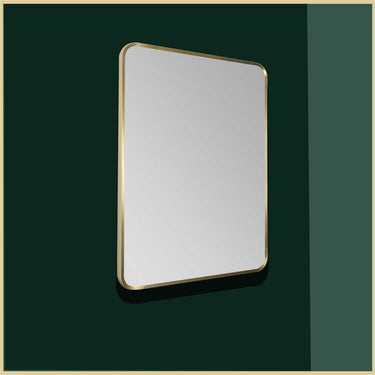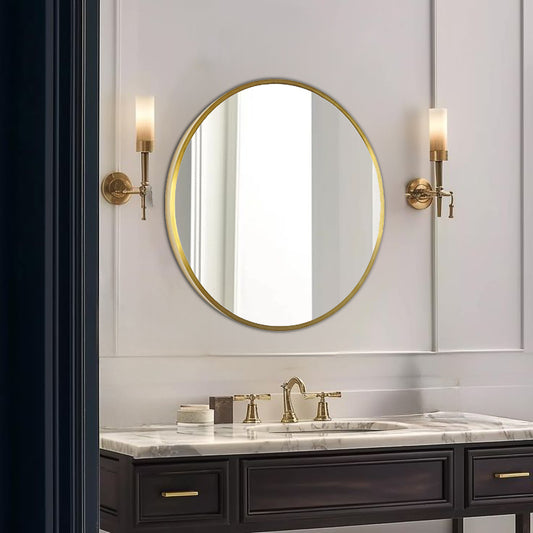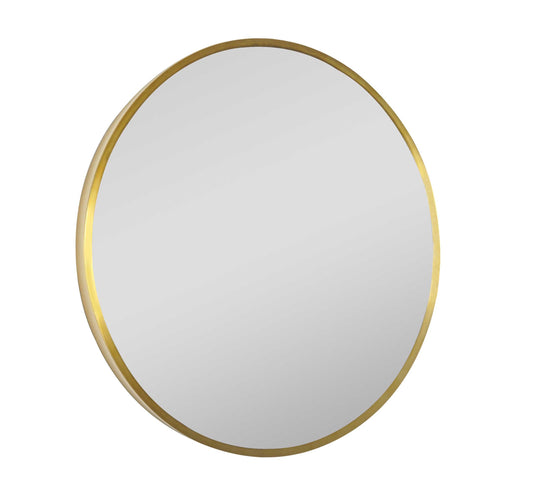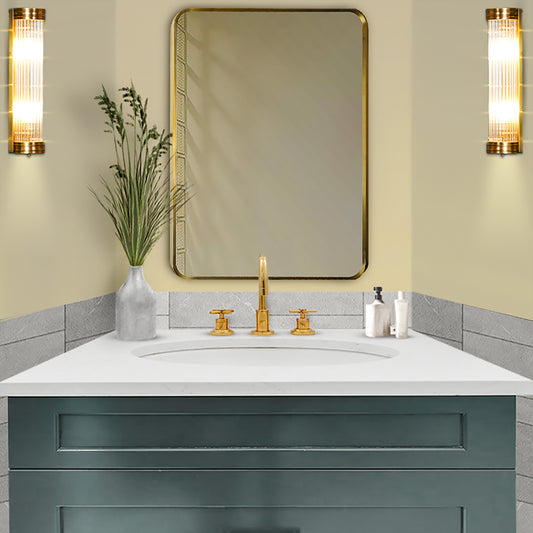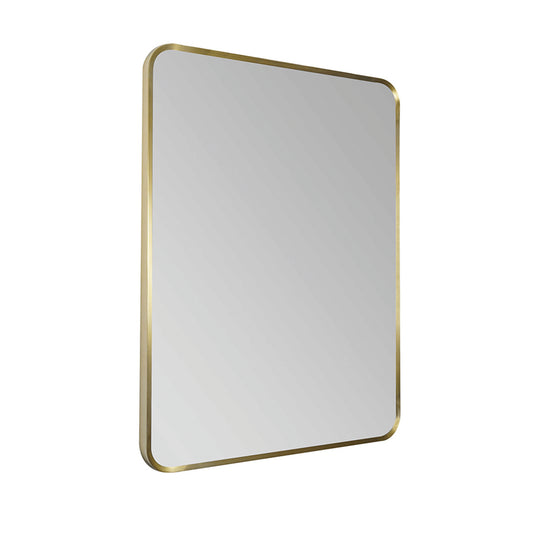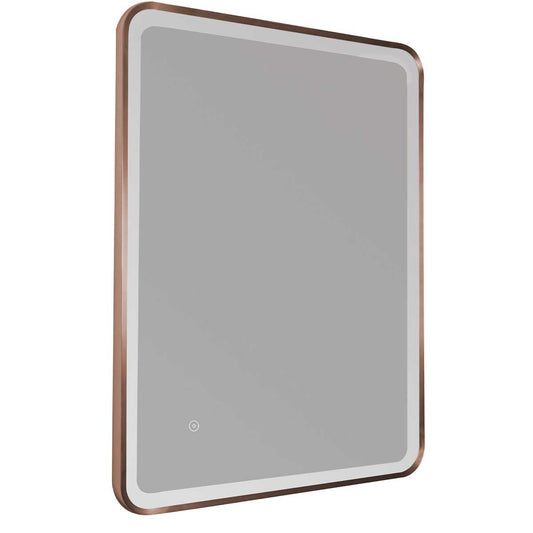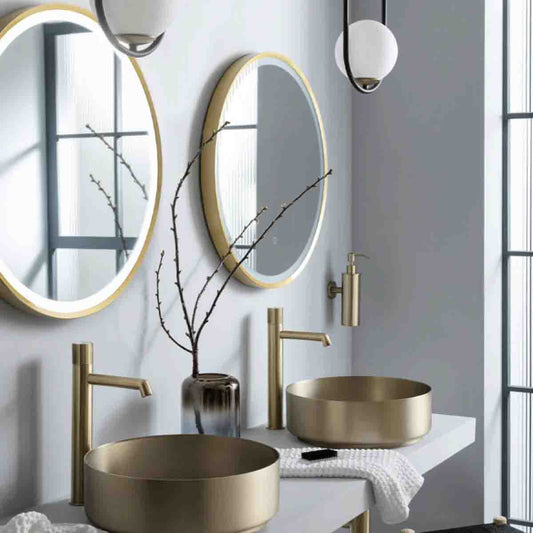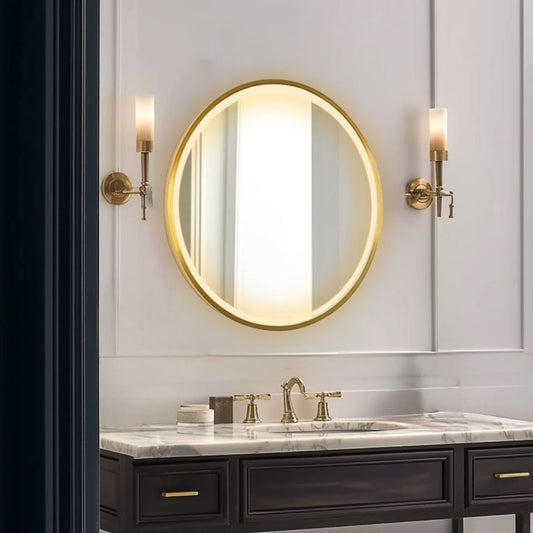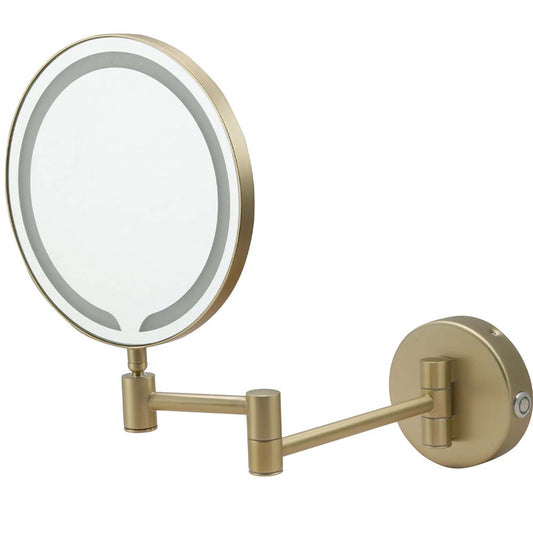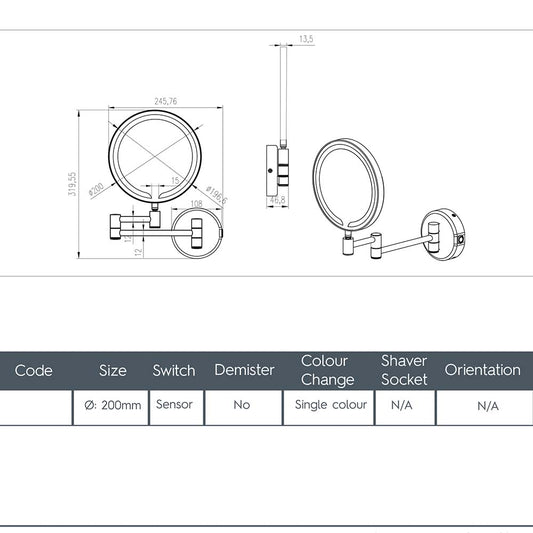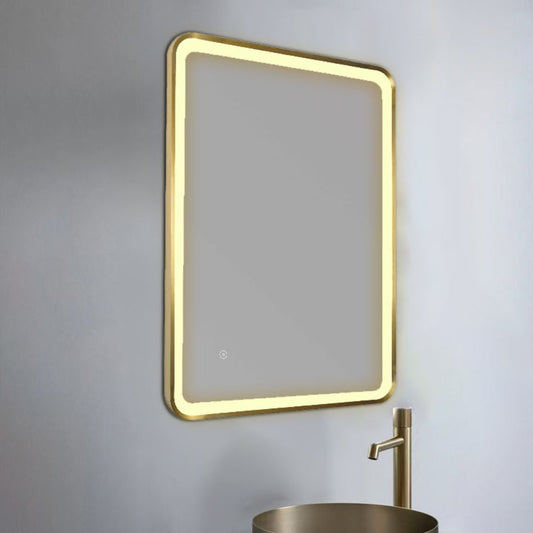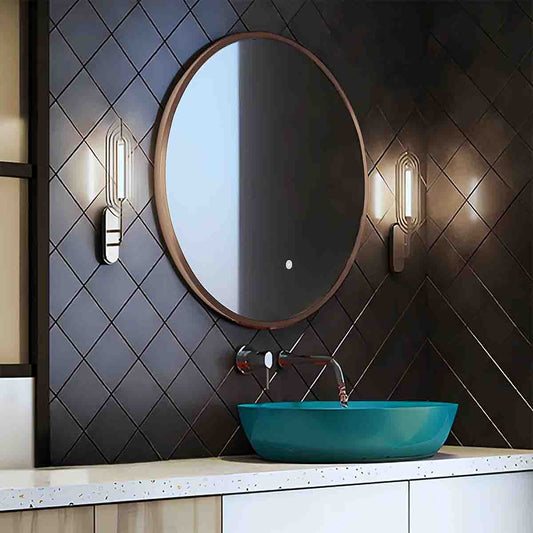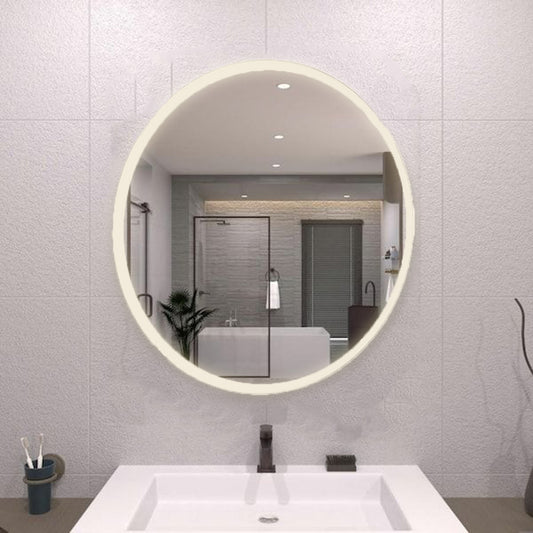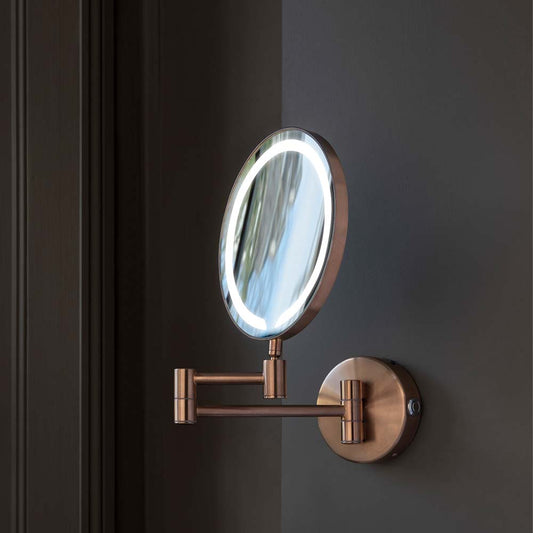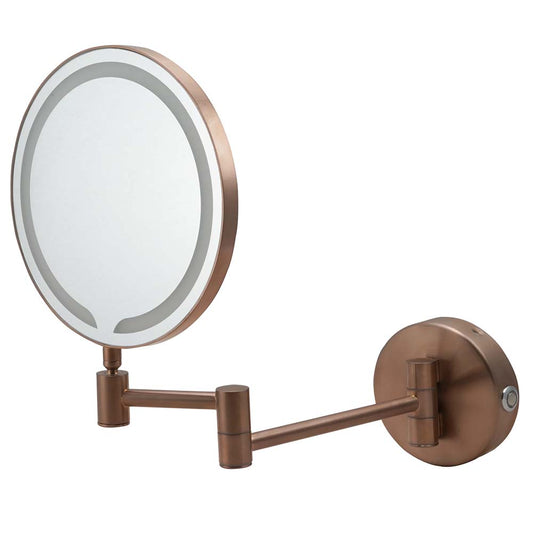The Opulent History of Golden Bathrooms: A Journey Through Time
Table Of Contents:
-
Introduction
-
Understanding the Golden Bathroom
-
History of Golden Bathrooms
-
Types of Golden Bathrooms: Exploring Luxurious Styles
-
Layout History of Golden Bathrooms: A Journey Through Luxurious Design
-
Understanding the Cost of Designing and Styling a Golden Bathroom
-
Conclusion
-
FAQs
Introduction
Bathrooms have evolved over the centuries, becoming more than just functional spaces. In recent decades, we’ve seen bathrooms transform into luxurious sanctuaries where aesthetics and comfort meet. One such transformation involves the use of gold—a material that symbolizes wealth, luxury, and timeless elegance. Gold accents and fixtures have become a key feature in high-end bathroom designs, creating spaces that radiate opulence. In this blog, we will explore the journey of the golden bathroom, examining its history, different types, layout influences, and the costs involved in styling your own golden bathroom.

Understanding the Golden Bathroom
A golden bathroom is not just about using gold-colored accents or fixtures; it’s about incorporating gold in a way that enhances the overall aesthetic and ambiance of the space. Gold is used in a variety of ways in modern bathroom design, from taps, showerheads, and mirrors, to lighting fixtures, tiles, and bath accessories. The use of gold in a bathroom elevates the space from ordinary to extraordinary, creating an aura of sophistication and luxury.
Gold can either be used sparingly as an accent or in a more bold, statement-making way, depending on the design preferences of the homeowner. Whether it’s the sleek finish of brushed gold or the glossy shine of polished gold, this luxurious metal adds depth and warmth to any bathroom.
History of Golden Bathrooms
The history of gold in bathroom design can be traced back to ancient civilizations. Gold was highly regarded as a symbol of power and wealth, and it was used to adorn the most regal structures and palaces. However, it wasn’t until the Renaissance period in Europe that gold began to make its way into domestic spaces, including bathrooms. Royalty and the aristocracy were the first to incorporate gold fixtures and finishes into their homes, and bathrooms, once simple functional spaces, started to evolve into luxurious retreats.
By the early 20th century, the opulence of gold was embraced by more affluent homes, and it began to be used in more decorative ways. Gold-plated taps, mirrors, and accessories became popular, especially in grand, old-world style bathrooms. The mid-20th century saw a shift towards modern design, with gold accents used sparingly to highlight certain features in the bathroom.
In more recent years, the trend of using gold in bathrooms has resurged. As modern design sensibilities move towards mixing luxury with minimalism, gold continues to be a sought-after feature in bathroom decor. The versatility of gold allows it to be used in various ways, whether as a small accent or as the dominant feature in the design.
1. Ancient Civilizations: Gold as a Symbol of Divinity
The use of gold in architecture and decor dates back to ancient civilizations, where it was seen as a symbol of divine power. In Ancient Egypt, the pharaohs used gold extensively in their tombs and palaces, believing that the metal had a connection to the gods and would offer protection in the afterlife. Though gold wasn’t used in bathrooms at the time, its association with opulence and prestige laid the groundwork for its later use in home design.
2. The Renaissance: Golden Touches in Royal Bathrooms
Fast forward to the Renaissance period, when golden accents began to be used in royal homes, particularly in European palaces. During this time, bathrooms, or privies, started to evolve from simple chambers into more sophisticated spaces, with ornate designs and furnishings. Gold fixtures, mirrors, and accessories were incorporated into the luxurious designs of aristocratic bathrooms, representing the social status of the homeowner.
The use of gold in these spaces was not just decorative; it was also a symbol of wealth and indulgence. Gold-plated bathtubs, gilded mirrors, and intricate gold detailing on taps or wash basins made a statement of elegance and exclusivity.
3. The 20th Century: Gold in Art Deco and Mid-Century Modern Design
The early 20th century witnessed the rise of Art Deco and Mid-Century Modern design, which embraced luxurious materials, including gold, to create bold, glamorous interiors. Bathrooms, especially in the homes of the wealthy, began to reflect this trend with the inclusion of gold fixtures, lighting, and accessories.
During the Art Deco period, gold was used in bold geometric patterns, often alongside materials like glass, chrome, and marble, to create striking, lavish bathrooms. The Mid-Century Modern era also incorporated gold elements into bathroom design, but often with a more minimalist approach, using gold accents to complement sleek, clean lines.
4. The Modern Era: The Golden Bathroom Trend Resurges
In recent years, the trend of golden bathrooms has seen a resurgence, with designers using gold to create modern, sophisticated spaces. Today, gold is used in a variety of bathroom elements, from taps and showerheads to light fixtures and towel racks. Whether as a focal point or as an accent, gold brings warmth and elegance to contemporary bathroom designs.
Gold finishes, such as brushed, matte, or polished gold, are now available to suit a range of styles, from traditional to modern. Gold fixtures are used in combination with other materials like marble, glass, and wood to create a balanced yet opulent aesthetic. Gold accents, like mirrors, lighting, and cabinet hardware, are also making a comeback, offering a luxurious touch to any bathroom design.
5. A Timeless Luxury: Why Gold Still Reigns Supreme
Gold’s enduring appeal in bathroom design is a testament to its timeless beauty. It symbolizes luxury and refinement while adding warmth and depth to a space. Whether used subtly through small accessories or in large statement pieces, gold can transform a bathroom into a serene, spa-like sanctuary or a glamorous, high-end retreat.
As modern bathrooms continue to embrace sophistication, the golden bathroom trend is here to stay. The opulent history of gold in bathroom design has evolved, but it remains a powerful symbol of elegance, indulgence, and luxury.
Types of Golden Bathrooms: Exploring Luxurious Styles
Gold has long been synonymous with luxury, opulence, and timeless elegance. Incorporating gold into your bathroom can elevate the space, transforming it into a refined and sophisticated retreat. Whether you are looking for subtle accents or want to go all-out with a lavish gold aesthetic, there are multiple ways to bring gold into your bathroom design. Let’s dive deeper into the various types of golden bathrooms that offer different styles, from classic to contemporary.

1. Classic Golden Bathroom
A classic golden bathroom exudes timeless elegance, drawing inspiration from palatial interiors and European luxury. This style typically features gold accents and fixtures that evoke an antique or vintage feel. Golden taps, elegant gold-framed mirrors, and ornate gold hardware add a sense of refinement. To complement these golden features, you may also incorporate luxurious materials such as marble, vintage-style freestanding tubs, and intricate tile work. This design approach creates a rich and majestic atmosphere, ideal for those who appreciate timeless beauty and a sense of grandeur.
In a classic golden bathroom, gold often takes center stage, but it’s used in a way that highlights its elegance without overwhelming the space. The combination of gold and traditional elements—such as intricate crown molding, antique-style vanities, and luxurious bath fixtures—creates an air of sophistication that’s hard to match.

2. Modern Golden Bathroom
For a modern take on a golden bathroom, subtlety and simplicity are key. In this style, gold accents are incorporated in a sleek and understated way. Instead of heavy, ornamental gold fixtures, you might find minimalist gold taps, matte gold showerheads, or thin gold framing around mirrors or tiles. The focus is on clean lines and uncluttered spaces, where gold is used to add warmth and elegance without detracting from the overall modern design.
The modern golden bathroom can feature materials like glass, chrome, and sleek tiles that provide a clean canvas for gold elements to stand out. Paired with minimalist furniture, floating vanities, and recessed lighting, gold in a modern bathroom feels fresh, chic, and luxurious—making it perfect for contemporary spaces.
3. Contemporary Golden Bathroom
Contemporary bathrooms blend modern design principles with functional aesthetics. Gold is often used as a contrast to other dominant materials, such as charcoal gray, black, or matte finishes, to create a striking visual impact. In a contemporary golden bathroom, gold fixtures might be paired with dark cabinetry, black tile accents, or textured stone surfaces, allowing the golden accents to act as a focal point.
In this design, gold might be introduced in features like geometric tile borders, gold-rimmed mirrors, or even a gold showerhead. The overall style is sleek, sophisticated, and artistic, incorporating both industrial and minimalist elements to create an elegant and balanced space.
4. Art Deco Golden Bathroom
For those who love bold and glamorous designs, the Art Deco style is a perfect fit. Characterized by its geometric patterns, rich textures, and symmetrical lines, Art Deco brings a sense of grandeur and drama into the bathroom. Gold is a major player in this style, often used in combination with black, white, and deep jewel tones like emerald and ruby to create a striking contrast.
Gold is incorporated into every aspect of the bathroom, from bold geometric designs in the tiles to the framing of mirrors and light fixtures. For example, you might find sleek, gold-lined mirrors with angular designs, gold accents on taps, or gold detailing on the bathtub. The Art Deco golden bathroom is all about luxury, opulence, and making a statement.
5. Glam Golden Bathroom
If you're looking to create a bathroom that exudes pure glamour, a glam golden bathroom is the way to go. This style relies heavily on gold as the main design element, with golden accents everywhere you look—from gold-framed mirrors and opulent light fixtures to gold-rimmed bathtubs and taps. The glitzy, high-shine finish of gold creates a sense of lavishness, while luxe materials like velvet, crystal, and glass add to the overall glamour.
The glam golden bathroom style often includes statement pieces like a chandelier with gold accents, a gold-framed vanity, and perhaps even gold-tiled walls for an extra dose of extravagance. This style is ideal for those who want their bathroom to look as luxurious and decadent as possible, turning every moment into an indulgent experience.

6. Vintage Golden Bathroom
For fans of retro designs, a vintage golden bathroom is a beautiful choice that combines nostalgia with luxury. Vintage-style bathrooms often feature classic elements such as clawfoot bathtubs, pedestal sinks, and old-fashioned fixtures. Gold accents in vintage bathrooms can include delicate gold detailing on taps, antique-style golden mirrors, or gold finishes on towel racks and shelves.
This style can also feature soft pastel colors, floral-patterned wallpapers, or even patterned tiles that complement the golden accents. The vintage golden bathroom strikes a balance between charming old-world elegance and modern functionality, offering a sophisticated, cozy, and nostalgic bathroom experience.
7. Bohemian Golden Bathroom
A Bohemian or Boho style bathroom offers a more eclectic and free-spirited approach to gold design. Rather than being an overarching theme, gold is used as an accent within a colorful and textured space. Think of golden-framed mirrors, gold light fixtures, or gold-painted tiles paired with patterned fabrics, wicker baskets, and vibrant color schemes.
The Bohemian golden bathroom is characterized by its blend of textures, cultures, and materials. Gold is a perfect way to add warmth to the otherwise natural, earthy tones often found in Boho design, such as terracotta, rattan, and linen. The result is a bathroom that feels rich in character, offering both vibrancy and opulence.

8. Luxury Spa-Inspired Golden Bathroom
A luxury spa-inspired golden bathroom is the perfect blend of relaxation and elegance. This design style is centered around creating a serene and indulgent environment with subtle touches of gold that enhance the feeling of luxury. Gold might appear in minimalist taps, towel racks, or framed mirrors. The emphasis is on creating a peaceful, high-end space, perfect for unwinding after a long day.
Gold accents can be paired with calming materials like wood, natural stone, or textured glass, creating a soothing atmosphere. Soft lighting, perhaps in the form of golden sconces or chandeliers, adds to the spa-like feeling while also bringing out the gold’s brilliance.
By understanding the different types of golden bathroom designs, you can select the one that best fits your personality and the ambiance you want to create in your bathroom. Whether you lean toward classic opulence, modern minimalism, or dramatic glamour, gold can be the perfect addition to bring elegance, warmth, and sophistication to your space.

Layout History of Golden Bathrooms: A Journey Through Luxurious Design
The history of golden bathrooms has evolved from a symbol of aristocratic grandeur to a modern design trend that embodies sophistication and luxury. Over the years, the layout and usage of gold in bathroom design have reflected changing tastes, technological advancements, and shifts in cultural values. Let’s take a deep dive into how the layout of golden bathrooms has transformed throughout history.
The Early Beginnings: Gold as a Symbol of Wealth and Power
In the earliest days of golden bathrooms, gold was used sparingly due to its expense and the elite status associated with it. In the Renaissance period, opulence and lavishness defined the elite’s home décor, and bathrooms were no exception. Gold fixtures, such as taps and mirrors, were often incorporated into spaces that were intended for relaxation or ritual bathing. However, these bathrooms were often not separate rooms but were found in larger, communal spaces—sometimes even within palatial rooms.
Gold was usually added to the bathroom layout in small doses, often in the form of intricate detailing or as part of a larger, more ornate design. Bathroom layouts from this time reflected the notion of indulgence, but the golden elements were merely accents, highlighting the wealth of the owner.
The Victorian Era: Opulence in Every Detail
The Victorian era saw a massive change in bathroom design. Wealthy families began to include private bathrooms as a necessity, and the golden bathroom became a focal point of elite luxury. The bathrooms were often large, featuring marble or ceramic tiles that were highly detailed. It was during this time that we saw the introduction of more intricate designs, with golden taps, mirrors, and brass-plated accessories.
Golden bathrooms in this era typically featured a more traditional layout, often with separate bathing and toilet areas. The focus was on combining functionality with opulence, and gold was used in every detail, from the frames of mirrors to the embellishments on the tiles. Bathrooms often had large bathtubs with gilded edges or freestanding units adorned with golden finishes. The layout would frequently feature heavy Victorian furniture with gold accents and was designed to evoke a sense of exclusivity.
Art Deco Era: Bold and Glamorous
During the 1920s and 1930s, the Art Deco movement swept through home design, and bathrooms were not left behind. This era embraced bold geometric shapes, luxurious materials, and vibrant colors. Gold was used liberally in bathroom layouts, but it was no longer reserved for small, detailed accents. Instead, gold was a major element of the overall design.
Golden bathroom layouts in the Art Deco period featured sleek, symmetrical lines, often seen in the framing of mirrors, tiles, and even the contours of bathtubs. Gold was often paired with contrasting materials like black lacquer or marble to create a striking visual appeal. The golden elements were more prominent in these layouts, making the bathroom feel like a true retreat. Fluted columns, angular patterns, and gold hardware were commonplace in bathrooms designed with this glamorous aesthetic.
Mid-Century Modern: Simplification with Golden Accents
The Mid-Century Modern period (1940s-1960s) was marked by clean lines, minimalism, and the use of new materials. Bathrooms during this era embraced functionality and simplicity, but gold remained an integral part of high-end designs. The layouts were more streamlined, with the focus shifting to maximizing space and reducing clutter.
Golden accents, though less overwhelming, were still prevalent in bathroom layouts. For example, gold could be found in the trim of mirrors, light fixtures, and taps. Bathtubs and showers were designed with sleek, smooth lines and might feature golden fixtures to add an elegant touch. Gold also appeared in subtle details, such as the handles on cabinets or towel racks, providing a sense of luxury without overpowering the minimalist layout.
Modern-Day Golden Bathrooms: A Fusion of Tradition and Contemporary Luxury
In modern bathroom design, gold has seen a major resurgence, but it’s no longer confined to the classical or antique designs of the past. Today’s golden bathrooms are a blend of both traditional elegance and modern simplicity. Gold is used in more understated ways, but still has a significant presence in the layout and design of the bathroom.
Modern layouts often feature clean, spacious designs with a focus on comfort and relaxation. Gold is now used in fixtures such as taps, showerheads, and mirrors, and it is often combined with other materials like marble, glass, and concrete. Gold accents are strategically placed to enhance the overall aesthetic without overwhelming the design.
For instance, a luxurious modern bathroom may have a large freestanding tub with a gold tap, a minimalist shower with a gold-framed glass door, or a sleek vanity with golden handles and knobs. These bathrooms may also feature gold elements in more unconventional areas, like golden lighting fixtures, towel bars, or even gold-veined marble tiles. The idea is to bring together elegance and functionality while maintaining a modern and contemporary look.

Golden Bathroom Layouts Today: The Ultimate Luxury
Today, the golden bathroom layout represents the ultimate luxury, where every element is carefully designed to exude sophistication. The layout is a careful balance between opulence and practicality. Gold is used in both subtle and bold ways, allowing homeowners to customize their spaces based on their preferences. Popular golden bathroom layouts today include:
-
Gold with Marble: This combination creates a regal atmosphere, with gold accents beautifully complementing the marble’s natural elegance. Golden taps, mirrors, and light fixtures against a backdrop of white or light-colored marble create a timeless, sophisticated design.
-
Gold with Black and White: For a more dramatic effect, gold is paired with contrasting black and white elements. This layout emphasizes modern elegance, and gold fixtures pop against the stark contrast of dark walls and sleek white tiles.
-
Gold with Natural Materials: Gold can also be paired with natural materials like wood or stone for a more grounded, organic feel. Gold-framed mirrors or gold shower fixtures contrast beautifully against the rich textures of natural wood and stone, creating a warm, inviting bathroom space.

Understanding the Cost of Designing and Styling a Golden Bathroom
Designing and styling a golden bathroom is a significant investment in your home, but it can also elevate the space into a luxurious and elegant retreat. The cost of incorporating gold elements into your bathroom design can vary greatly depending on various factors, such as the scope of the renovation, the materials you choose, and the quality of the fixtures and finishes. Here’s a breakdown of what goes into the cost of designing and styling a golden bathroom:
1. Fixtures and Hardware
One of the most significant contributors to the cost of a golden bathroom is the choice of fixtures and hardware. Gold-plated or gold-finished fixtures such as taps, showerheads, towel racks, and handles can be expensive due to the materials and the intricate finishes involved.
-
Gold Taps and Showerheads: Expect to pay anywhere between £100 and £600 or more, depending on the brand, finish (brushed, polished, matte), and complexity of the design.
-
Towel Bars, Handles, and Other Hardware: Gold towel bars, cabinet handles, and other small fixtures typically range from £30 to £200 per item.

2. Gold Accents and Decor
Golden bathroom accessories and accents—such as mirrors, lighting fixtures, bath mats, soap dispensers, and even golden tiles—add flair and opulence to the bathroom. These accents don’t have to be gold-plated but can still create a luxurious look with gold finishes or accents.
-
Gold-framed Mirrors: Depending on the size and design, a gold-framed mirror can cost between £100 and £500.
-
Lighting Fixtures: Gold chandeliers, pendant lights, or sconces can range from £100 to £1,000 or more, depending on the design and size.
-
Accessories: Golden soap dispensers, towel racks, and bath accessories can cost between £20 and £100 per item.
3. Tiles and Wall Treatments
Incorporating gold into the tiles and wall treatments of your bathroom can significantly elevate the aesthetic. Marble tiles with gold veining, for example, are very popular in golden bathrooms. However, natural stone and marble can be pricey.
-
Gold-accented Tiles: Gold-veined marble tiles can cost between £40 and £200 per square meter, depending on the type of stone, quality, and size of the tiles.
-
Gold Mosaics: Mosaics or gold-accented tiles can also be used to create borders, feature walls, or backsplash areas. These can cost anywhere between £30 and £150 per square meter.
4. Bathtubs and Vanities
A freestanding golden bathtub, or a bathtub with gold accents, can make a bold statement in your bathroom. Likewise, vanities with gold fixtures, handles, and finishes can contribute to the overall cost.
-
Freestanding Gold Bathtubs: A luxury, freestanding bathtub with gold accents can range between £1,000 and £5,000, depending on the material (acrylic, stone, copper) and the brand.
-
Vanities with Gold Accents: Vanities with gold finishes or gold hardware may cost between £200 and £2,000 or more, depending on the design and materials used.
5. Labour Costs
If you’re having a golden bathroom professionally installed or renovated, labor costs can add up quickly. Labour costs will depend on the complexity of the design, the scope of the project, and your location.
-
Average Labour Costs: In the UK, the cost of labor for bathroom installation or renovation can range from £300 to £800 per day for a skilled tradesperson. For more complex renovations, such as changing plumbing or electrical work, the labor costs may be higher.
6. Design Fees
If you opt for a professional interior designer to help you create your golden bathroom, design fees can vary based on their experience and the scope of the project.
-
Interior Designer Fees: A bathroom designer can charge anywhere between £50 and £150 per hour or offer flat fees for the entire design project. For a comprehensive design service, the total cost could range between £500 and £2,500, depending on the size of the bathroom and the level of customization.
7. Customization Costs
Customization is often required to achieve a truly unique and luxurious golden bathroom. Whether you're designing custom cabinetry, bespoke gold features, or personalized tiling, these additions can significantly add to the total cost.
-
Custom Pieces: Custom cabinetry or bespoke gold fixtures can cost upwards of £1,000, depending on the materials used and the design complexity.
-
Personalized Gold Finishes: Tailored gold finishes on taps, showerheads, and other fixtures can incur additional charges from £100 to £500 or more per piece.
8. Overall Budget for a Golden Bathroom
In the UK, the total cost for designing and styling a golden bathroom can range widely based on the factors mentioned above. On average, you can expect to pay anywhere from £5,000 to £15,000 or more for a full renovation, including the cost of gold fixtures, accents, and customizations. For smaller upgrades, such as adding gold taps or a gold-framed mirror, you may spend a few hundred pounds to a couple of thousand, depending on your choices.
Designing and styling a golden bathroom is an investment that adds luxury, elegance, and timeless appeal to your home. The cost varies greatly depending on your selections, from the gold fixtures to custom designs, materials, and finishes. While the price tag may be higher than a standard bathroom, the resulting transformation offers a space that is truly unique and opulent.
If you're aiming for a golden bathroom that combines style, elegance, and functionality, it’s essential to plan your budget carefully. Be mindful of the materials, fixtures, and customization options to ensure that you achieve the luxurious look you desire while staying within your budget.
Conclusion
The golden bathroom trend is not just about lavish aesthetics—it’s a reflection of timeless luxury, elegance, and sophistication. From the opulent history of gold in royal palaces to its modern-day resurgence, incorporating gold in your bathroom design adds a touch of class and grandeur that can turn an ordinary bathroom into a glamorous retreat. Whether you’re opting for subtle gold accents or an all-out golden oasis, the possibilities are endless, allowing you to create a bathroom that is both functional and magnificently beautiful.
FAQs
1. Why are golden bathrooms considered luxurious?
Golden bathrooms have long been associated with wealth and opulence due to gold's rarity and its historical association with royalty and aristocracy. The use of gold in bathroom fixtures, finishes, and accessories enhances the sense of luxury and elegance, creating a regal atmosphere.
2. When did golden bathrooms become popular?
Golden bathrooms gained popularity in the early 20th century, particularly among wealthy individuals and royalty. The trend of incorporating gold accents into bathrooms continued to evolve, especially during the Art Deco period, where luxury design reached new heights.
3. How has the style of golden bathrooms evolved?
Golden bathrooms began with heavy, ornate details during the early to mid-20th century and have evolved into a more refined, minimalistic aesthetic. Today, modern golden bathrooms use gold in more subtle and sophisticated ways, integrating gold fixtures, tiles, and hardware into contemporary and traditional bathroom designs.
4. What materials are commonly used to create a golden bathroom?
In golden bathrooms, gold is typically used in taps, showerheads, sinks, and accessories. Often, gold is applied in finishes such as gold plating, brushed gold, and matte gold. Some designers also use gold-tinted tiles, mirrors, and lighting fixtures to enhance the luxurious feel.
5. Are golden bathrooms still in style?
Yes, golden bathrooms remain a stylish and sophisticated option for those looking to create an elegant space. While trends may change, gold’s timeless appeal ensures it stays relevant in high-end bathroom designs.
6. Can I incorporate gold into my bathroom if I have a smaller space?
Absolutely! Even in smaller bathrooms, incorporating gold accents such as gold taps, mirror frames, or small accessories can make a big impact without overwhelming the space. The key is to balance gold with other colors and materials to avoid a cluttered feel.
7. What are some modern trends in golden bathroom designs?
Modern trends include the use of matte gold finishes, minimalist gold fixtures, and incorporating gold into sleek, contemporary designs. Gold is being paired with neutral tones, marble, and glass for a more refined and balanced look.
8. Is it expensive to design a golden bathroom?
Gold finishes and fixtures can be more expensive than standard bathroom elements, but the cost varies depending on the quality of materials and the extent of gold used in the design. However, with careful selection of key pieces, you can create a golden bathroom that fits a range of budgets.
9. How can I maintain the gold accents in my bathroom?
To maintain the beauty of gold accents, regular cleaning with a soft cloth and mild cleaner is recommended. Avoid abrasive products that can scratch the finish. Additionally, wiping down surfaces after each use helps prevent water spots and tarnishing.
10. Can I mix gold with other finishes in my bathroom design?
Yes, gold pairs beautifully with a variety of finishes, including matte black, chrome, and brushed nickel. Mixing gold with other metals or materials can add depth and interest to your design, provided there is a balance between the elements used.



